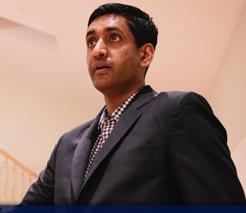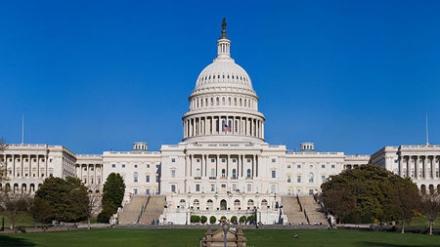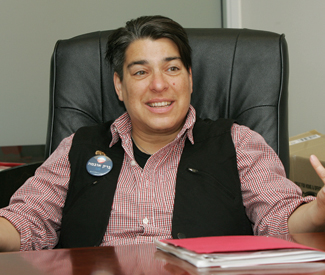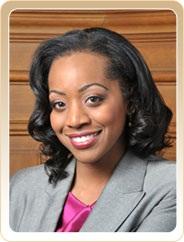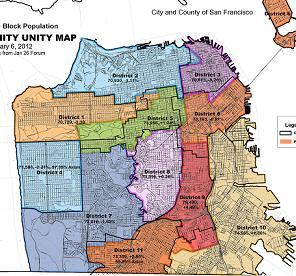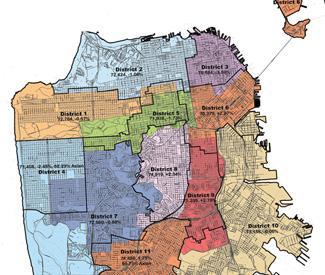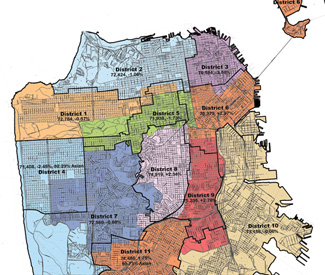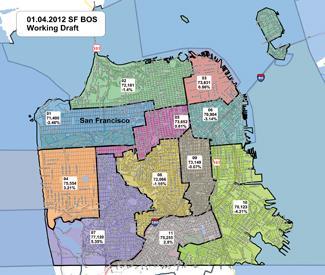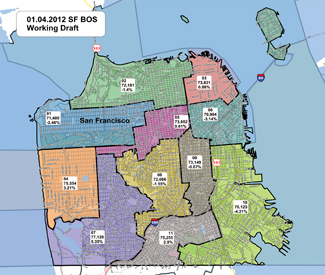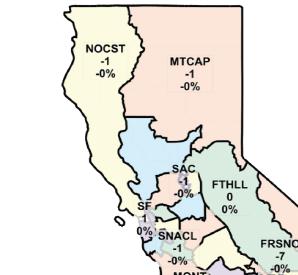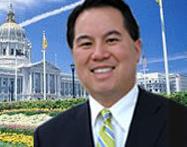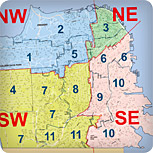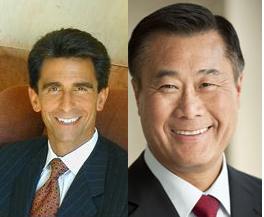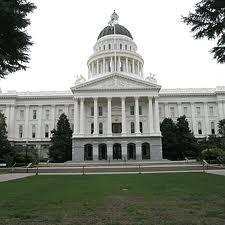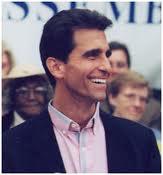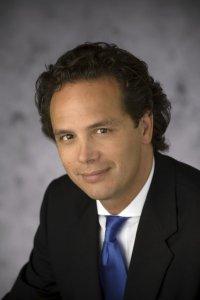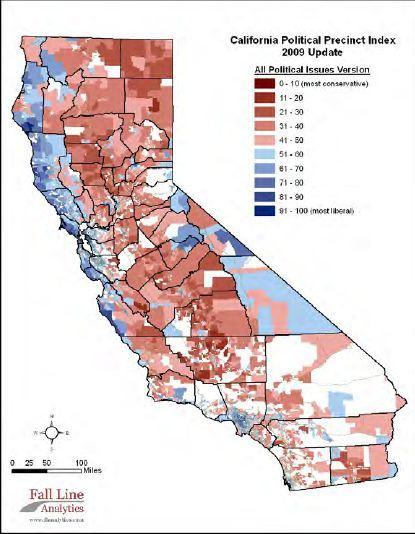State ballot measures
PROPOSITION 30
TEMPORARY TAX INCREASE
YES
Why are we voting on — and watching the various interests spend about $30 million on — a simple tax increase that in most sane places would be vetted and approved by the state Legislature? Two reasons: California has an archaic and insane rule mandating a two-thirds vote of both houses for a tax hike, which is impossible as long as a few Republicans are still in Sacramento — and our crabby old oddball of a governor, Jerry Brown, insisted in his last campaign that he’d never raise taxes without a vote of the people.
Prop. 30 is an amalgam, a mixture of what Brown first wanted and what the more liberal supporters of a tax on millionaires were proposing. The guv had to come the table when it looked like the millionaire tax might have enough support to compete with his plan; he made a few concessions, and everyone signed off on this plan. It raises taxes on people with incomes of more than $250,000 (good) and hikes the sales tax by a quarter-cent (not so good) and would bring in $6 billion a year until it expires in 2019.
A bit of perspective: When former Gov. Arnold Schwarzenegger whacked the vehicle license fee his first day in office, he cost the state about $4 billion a year, with the stroke of a pen.
And in a state with more billionaires than any other place in America, a fabulously rich place with the world’s eighth-largest economy, the notion that we have to argue about raising $6 billion in taxes is farcical.
Nevertheless, it’s crucial to pass Prop. 30. The money will prevent catastrophic cuts to education and social services. Prop. 30 won’t move California a single step forward — but it will keep us all a few inches away from the abyss.
Brown has gambled his governorship on this — and if he loses, he’ll take a good part of the state’s future with him. We live in strange and unpleasant times; vote Yes on 30.
PROPOSITION 31
STATE BUDGET AND LEGISLATIVE REFORMS
NO
There are no easy solutions to the fiscal and political mess that is California, 2012, and voters should beware of self-proclaimed reformers claiming to wield silver-bullet fixes. Just the fact that this Prop. 31 tries to enshrine so many complex legislative reforms into one measure should give us pause. And it’s almost always a bad idea to use the initiative process to micromanage complex relationships between state and local governments and between the legislative and executive branches of state government.
Some of what this measure would do is good, such as requiring the state to do two-year budgets, a reform that San Francisco recently adopted. The idea of giving local governments more money and authority also has merit, although that’s a tricky proposition that could undermine environmental and worker safety protections.
We’re also disturbed by the idea of giving governors unilateral authority to make cuts during years with big budget deficits, and with a requirement that new state programs must be tied to specific funding sources. Again, many of these ideas sound good at first glance, but placing new restrictions on Legislators will only hinder their ability to respond to problems and popular will. And giving the governor that much power is just dangerous. Vote no on 31.
PROPOSITION 32
BANNING SOME POLITICAL SPENDING
NO, NO, NO
This is by far the most dangerous and deceptive measure on the ballot, one that threatens to cripple the ability of labor unions to engage meaningfully in the political process, giving big corporations and wealthy individuals even more control over our lives. Yet this insidious measure disingenuously purports to do just opposite, tapping into widespread concerns over corporate power and trying to fool people into voting against their best interests.
The measure presents itself as an even-handed effort to reduce political spending by both unions and corporations. “Prohibits unions from using payroll-deducted funds for political purposes. Applies same use prohibition to payroll deductions, if any, by corporations or government contractors,” reads the official ballot summary.
But while payroll deductions are the main source of funding for labor unions — which use that money to advocate for the interests of their members and the broader working class — few corporations deduct money from their employee paychecks for political purposes. They tap the many other sources of funding at their disposal.
Similarly, the measure claims to ban “union and corporate contributions to candidates and their committees,” yet it exempts many of the largest corporations from that restriction, allows even the corporations it does cover to bypass the restriction by forming super PACs, and it still allows corporate officers to funnel contributions to their favored candidates, making the corporate controls almost completely meaningless.
This measure is simply the latest effort by powerful corporations, wealthy individuals, and the conservative movement to hammer the final nail into the coffin of labor unions — which at this point are often the only force with the money to go up against terrible big-business candidates and measures. This needs to be a rallying cry for everyone who cares about fair elections: Vote no on 32.
PROPOSITION 33
NEW CAR INSURANCE RATING FACTOR
NO
This measure was created and funded by Mercury Insurance founder George Joseph, who tried to do the same thing two years ago with Prop. 17, which was soundly rejected by voters (see “Buying power,” 3/16/10). So this time around, he created a few narrow exemptions meant to defuse the criticism from that campaign, bought support from an influential nonprofit (see “The latest insurance scam,” 9/4/12)), and he’s banking on the outcome being different this time.
But Prop. 33 does the same thing as Prop. 17: it allows insurance companies to give discounts to drivers who have maintained continuous insurance coverage and pay for those discounts by increasing insurance rates for everyone else. In an era of global warming and increasingly congested roadways, the measure would punish those who opt to give up their car for awhile and use public transit, bicycles, or walking. Recent immigrants, and those who spend some time abroad or who quit their job to start a small business, would pay higher rates when they return to driving.
Last time, the measure was defeated by arguments that it punished soldiers and the unemployed, so Joseph tried to defuse those arguments with exceptions for those on “active duty service” or for people who have been unemployed for up to 18 months, but only if it’s the result of a “layoff or furlough.” Consumer Watchdog — the group that created California’s car insurance regulatory system with 1988’s Prop. 103 and has been battling Joseph’s various efforts to undermine it ever since — is strongly against the measure and dismissive of its narrow exemptions, citing studies showing rates will rise for those least able to afford it.
The bottom line is this is about Joseph’s bottom line, and he isn’t spending tens of millions of dollars in order to save you money.
PROPOSITION 34
YES YES YES
You want to know about the effectiveness of the death penalty in California? Try this: the number one cause of death among condemned inmates on death row is old age.
Then try this: The cost of implementing the death penalty since it was restored in California in 1978 exceeds $4 billion — about $308 million for each of the 13 people the state has killed.
So: California could hire 5,000 more teachers for every inmate strapped into a gurney and pumped full of lethal drugs. Sound like a bargain?
It gets better: Even if the state doesn’t kill anyone, it spends $184 million a year keeping people on death row who could instead be getting life without parole — which is, in the vast majority of cases, exactly the same sentence.
Prop. 34 would end 34 years of insanity in the golden state. It would remove California from the unholy roster of states that allow executions and would restore some justice to the legal system.
The flaws in the death penalty are legendary. More than half of the people on death row in America are black or Latino. An ACLU study found that 12 white people were executed for killing blacks, while 178 black people died for killing whites. Nobody who has the money for private counsel gets a death sentence; in nearly every single case, the condemned were impoverished, brain-damaged, or facing serious mental-health issues — and went to trial with inexperienced, overwhelmed public defenders who lacked the resources for a capital trial.
Oh, and then there are the people who turned out to be innocent. In recent years, 17 people who were scheduled to die were exonerated by DNA evidence that didn’t exist when they went to trial. There are hundreds more around the country who never got a fair shot in the courtroom. As long as they’re alive, there’s still a chance to correct a mistake. After the lethal injection, that option goes away.
California, for all its liberal image, has long been among the more bloodthirsty states, approving the death penalty by large majorities. But that’s changing — as the evidence increasingly shows how wrong and ineffective the death penalty is, the margin of voters in favor of repeal is growing. And this year, it’s entirely possible that this barbaric practice, outlawed in most of the civilized world, will come to an end in the nation’s most populous state.
This is a big deal; it’s a reason to go to the polls even if you’re disenchanted by Obama and unhappy with your local candidates. If California rolls back the death penalty, the rest of the country may start to follow.
If you still believe the death penalty deters crime, never mind: Go ahead and defy all of the evidence and vote against Prop. 34. If you’re a member of the reality-based community, please: Round up your friends, your family, your neighbors and vote yes on 34.
PROPOSITION 35
SEX TRAFFICKING
NO
Human trafficking is an egregious and horrible act. California law, as well as federal law, prohibits it, and the penalties are appropriately harsh.
But Prop. 35 — like so much else on the state ballot, the spawn of one rich person with a cause — wouldn’t just crack down on the worst people in the sex industry. It would expand the ability of state and local authorities to harass and arrest consensual sex workers and would lead to more people serving more time in prison for victimless crimes.
Former Facebook executive Chris Kelly, mad that the state Legislature wouldn’t pass a trafficking law to his liking and looking for an issue to run for office on, put up the money to place this mess on the ballot. It would rewrite the section in California’s Penal Code that defines human trafficking, and impose harsher sentences on those found guilty. It requires that all those convicted of human trafficking — under an expanded definition that includes such non-sexual crimes as extortion — register on the sex offender registry, and that all registered sex offenders turn over their Internet usernames and passwords to the government.
Prop. 35 is a parade of horribles that could be used to make someone who peed in public turn over his Internet information and to threaten friends and relatives of sex workers. Under this law, the adult child of a sex worker who was living in her house with her financial support could be tagged a trafficker — and could face a long prison term and a lifetime of being tagged as a sex offender.
We agree with sex workers advocates that human trafficking is a vile crime. But we also agree that decriminalization of prostitution should be the first step towards solving it, making sex workers unafraid to come forward and report abuse in their industry and making it easier to distinguish between forced and consensual labor. In the meantime, state Sen. Mark Leno is working on legislation that will address trafficking without the problems in Prop. 35.
We’ll wait for Leno’s alternative. Vote No on 35.
PROPOSITION 36
THREE STRIKES MODIFICATION
YES
On Nov. 4, 1995, a small-time criminal named Leando Andrada stole $150 worth of videotapes from K-Mart. The father of three was charged with felony theft — and since he’d had prior convictions for burglary and marijuana transportation, his conviction led to a sentence of 25 years to life.
That’s nuts — but it’s the result of a very bad 1994 law that has made California one of the harshest states in the nation for repeat offenders — and has overcrowded the state prisons and cost taxpayers hundreds of millions of dollars.
The law states than anyone convicted of three “strike” felonies, no matter how nonviolent, must serve a minimum of 25 years behind bars. Even the people who sponsored the three-strikes law now agree that it’s gone too far.
Consider: Nearly 8,900 three-strikers are in prison in California, with 3,500 of them serving life sentences. A disproportionate 46 percent of three-strikers are African American.
Incarcerating all of these prisoners is expensive. Reforming three strikes could save the state of California $70 million to $90 million annually if it passes. And some of that money would be directed towards solving more murders and rapes — instead of paying so Californians can languish in prison for stealing video tapes.
Prop. 36 wouldn’t repeal three strikes. It would simply require that the third strike offense be considered violent or serious. And it would provide a means for people currently serving ridiculously long sentences for relatively minor crimes to appeal and seek relief.
This is long overdue. Vote yes on 36.
PROPOSITION 37
GMO LABELING
YES
A huge amount of the food on supermarket shelves in California contains genetically modified organisms (GMOs.) A lot of people, particularly in the chemical and agribusiness industry, think that’s just fine. They say that GMOs have no negative health impacts and improve the ability of producers to bring low-cost fresh food to customers.
We freely admit: The scientific evidence on GMOs is pretty sparse. There are some studies done on rodents that show organ failure and cancerous tumors related to some GMOs, but there are no human studies at all and the Food and Drug Administration says there’s no need to regulate GMOs.
Prop. 37 doesn’t seek regulations or limits in any way. It just mandates that GMO food be labeled — the way it is in at least 50 countries worldwide, including all of the European Union, China, Japan and Russia. Hardly a radical proposition, but it’s got Big Ag in a furor.
The No on 37 campaign is funded by Monsanto, Dupont, Pepsico, and other chemical, seed and food companies that make their money from genetically engineered foods. Those outfits say engineered food is perfectly healthy, and that food labeling would unnecessarily scare consumers.
We’ll be glad if they’re right, and GMOs are just fine and dandy. But consumers deserve a choice — and labeling would force the industry to support further studies on consumer safety. Vote yes.
PROPOSITION 38
TAX FOR EDUCATION
YES
There’s so much wrong with Prop. 38, starting with its origin. It’s another billionaire plaything, the work of the wealthy Molly Munger, who decided, on her own, that the state should raise income taxes to pay for better schools.
Yes, the state should raise income taxes on the wealthy. Yes, some of that money should go to education. But this is not the optimal way to go about it.
Because nobody but Munger and her pals vetted the measure, it’s got problems. For starters, it’s not a tax increase on the rich — it’s a tax increase for just about everybody. If you make more than $7,300 a year, your state income tax would go up. Granted, not by much: The sliding scale starts at 0.4 percent (about $30 a year for the very low end of the scale, and the wealthiest will pay much more) but still: the tax burden in this state (with its high sales-tax rates) falls disproportionately on the poor and middle class, and Munger’s measure should have exempted all but the top earners. And it’s got a popular, but troubling distribution scheme — between 60 and 85 percent of the estimated $10 billion a year in new revenue will go to K-12 education. The schools need the money — but so do cities and counties who pay for public health, affordably housing, public safety and a lot of other priorities.
But the question facing the voters isn’t whether Munger is a self-serving brat who went her own way on this, or whether there are flaws in the measure. It’s whether the state ought to raise taxes to pay for education. With all the duly noted reservations, the answer to that question has to be yes.
PROPOSITION 39
TAX TREATMENT FOR MULTISTATE BUSINESSES
YES
Again, an imperfect law, sponsored by an imperfect billionaire that seeks to solve a problem better addressed in the state Legislature. In this case, though, the Legislature’s tried to address it, but the recalcitrant Republicans haven’t let it happen.
Prop. 39 would change a loophole in the state’s tax code that helps multistate businesses to avoid state taxes. In essence, the current law lets companies choose whether to base their state tax liability on in-state sales or a combination of sales, employment, and property. Companies with a lot of out-of-state employees are able to reap huge tax breaks — if anything the current law encourages outsourcing.
Prop. 39, sponsored and bankrolled by hedge-fund billionaire Thomas Steyer, would mandate that all companies use the single in-state sales factor. The new revenue to California: $1 billion a year. It’s more fair, it creates the right incentives to keep jobs and equipment in the state, and it cuts a hole in the deficit.
VOTE YES ON 39.
PROPOSITION 40
REDISTRICTING REFERENDUM
YES
This referendum challenged the California Senate districts that were created early this year by the Citizen Redistricting Commission, an independent body that voters created as an alternative to the previous practice of letting politicians draw their own legislative districts after the decennial census. Those new districts aren’t perfect — indeed, San Francisco was placed in a single Senate district instead of the pair we had — but the process that created them was widely lauded as “open, transparent, and nonpartisan,” as the California Supreme Court ruled in rejecting a challenge to the districts. That ruling has caused the proponents of this measure — the side urging a “no” vote, which would invalidate the districts and let a judicial panel redraw them, whereas a “yes” vote upholds the existing districts — to drop their campaign and accept the commission’s results. Vote yes.

